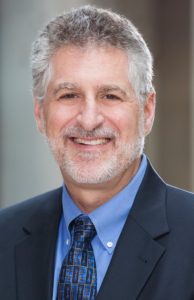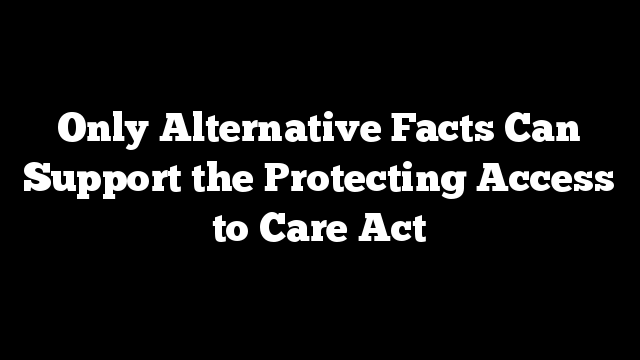 In late March of this year, JAMAInternal Medicine published a study finding that the “the overall rate of [malpractice] claims paid on behalf of physicians decreased by 55.7% from 1992 to 2014.” The finding wasn’t new. In 2013, the Journal of Empirical Legal Studies published a study co-authored by one of us (Hyman) which found that “the per-physician rate of paid med mal claims has been dropping for 20 years and in 2012 was less than half the 1992 level.” In fact, peer-reviewed journals in law and medicine have published lots of studies with similar results. It is (or should be) common knowledge that claims of an ongoing liability crisis are phony.
In late March of this year, JAMAInternal Medicine published a study finding that the “the overall rate of [malpractice] claims paid on behalf of physicians decreased by 55.7% from 1992 to 2014.” The finding wasn’t new. In 2013, the Journal of Empirical Legal Studies published a study co-authored by one of us (Hyman) which found that “the per-physician rate of paid med mal claims has been dropping for 20 years and in 2012 was less than half the 1992 level.” In fact, peer-reviewed journals in law and medicine have published lots of studies with similar results. It is (or should be) common knowledge that claims of an ongoing liability crisis are phony.
But inconvenient facts have never stopped interest groups or politicians from making false claims about med mal litigation. Since 1991, when Dan Quayle struck gold by asserting that the U.S. had too many lawyers, Americans have heard non-stop about “jackpot justice” in which patients who weren’t even injured win millions; about the flood of frivolous lawsuits in which doctors are sued even though they didn’t make any mistakes; about jury verdicts skyrocketing out of control; and about doctors working all their lives only to have their savings wiped out by a single malpractice suit. All of these charges are false—you can find the evidence here, here, here, and here. But in politics, it’s staying on message that counts; it doesn’t seem to matter whether the message is true.
Kellyanne Conway brought “alternative facts” into the political lexicon, but tort reform advocates have been mouthing alternative facts for decades — and researchers who study the civil justice system empirically have been debunking them for just as long.
Politicians don’t take kindly to being called out. When Texas’ tort reformers sought to limit lawsuits in 2003, they promised that caps on damages would save money by reducing the practice of defensive medicine. Then, we co-authored a study showing that health care spending rose at the same pace after 2003 as it had before. How did then-Governor Rick Perry respond? He said that the real goal of reform was to lure doctors to Texas, not to save money. And, he claimed the real goal had been accomplished, because thousands of new doctors had flooded into the state. Perry’s fallback claim was also based on alternative facts. As we showed in another co-authored study, there was no evidence of an increase in the number of direct patient care physicians in Texas during the post-reform period. Perry’s career did not suffer because of these statements – he now heads the U.S. Department of Energy.
Perry has a kindred spirit in Dr. Tom Price, the Secretary of the U.S. Department of Health and Human Services. In 2010, Price asserted that defensive medicine accounted for $650 billion every year, or 26% of health care spending. Price’s “evidence” for this astonishing claim was a survey of physicians, asking them to estimate what percentage of health care spending was attributable to defensive medicine. This figure is implausible on its face, and is roughly 15 times the estimate of $45.6 billion per year published in 2010 in Health Affairs. Some studies have found even lower estimates. And, with 30 states already enacting tort reform, many of the potential savings (if any) have already been realized.
Republicans are still pushing for tort reform at the federal level. H.R. 1215, the Protecting Access to Care Act would impose a $250,000 cap on recoveries for non-economic losses. The FY 2018 budget for HHS includes a similar proposal to “modernize” the medical liability system by capping non-economic losses at $250,000, but indexing the cap for inflation. We doubt that these caps will have much of an impact on health care spending or physician supply. They are also a remarkable intrusion into an area traditionally regulated by the states. And they are aimed at a peculiar target, since there is no evidence that med mal victims are routinely over-compensated. To the contrary, it is well established that most receive amounts that are too small to cover the economic losses they incurred, or, in the case of plaintiffs who win at trial, too small to cover the losses that juries think they incurred.
H.R. 1215 also includes a sliding scale cap on plaintiffs’ lawyers’ contingent fees. The FY 2018 budget for HHS includes a similar provision allowing courts to modify fee arrangements. These provisions are sold as protections for vulnerable patients who can’t protect themselves from greedy attorneys, but they are really just price controls that prevent many victims with meritorious claims from obtaining the legal services they need. We have studied the market in which clients hire med mal lawyers. Lots of firms compete for their business, and “it is hard to make an economically plausible argument for capping contingency fees.” The only explanation for the GOP’s desire to cap their fees is that plaintiffs’ attorneys tend to support Democrats.
To support H.R. 1215, then, one needs a host of alternative facts—a med mal liability crisis that doesn’t exist, hundreds of billions of dollars in imaginary health care savings, fictional damage awards, and imaginary overcharges by plaintiffs’ attorneys. Could even Kellyanne Conway deliver all that?
Charles Silver is a professor at the University of Texas School of Law and David A. Hyman is a professor at Georgetown University School of Law. They are co-authors of After Obamacare: Making American Health Care Better and Cheaper (forthcoming 2018).
